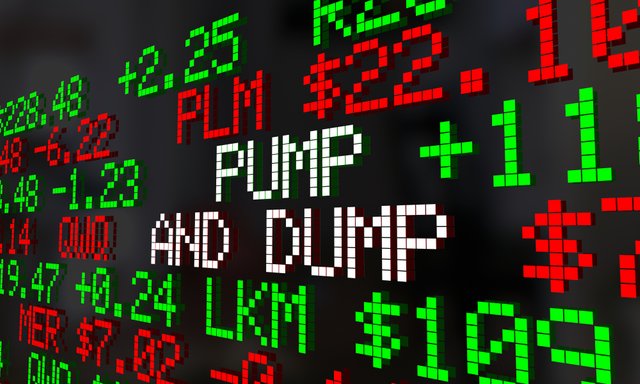It’s time to clear things up. Every time we explain Tiberius Coin, how it works, its applications, and its merits, we also talk about its costs.
No one likes fees, we understand that. Still, we were quite surprised by the push-back and the reluctance we’ve experienced from the crypto-community regarding the cost side of things. It didn’t take us long to understand what’s going on.
Hint: Pump n’ dumps and airdrops!

The crypto-community doesn’t like costs, we get that. This isn’t a surprise as the industry is constantly being bombarded by new projects that may or may not change the world. And on top of that, it seems like all these so-called “game-changers” are totally free. It’s obviously not an easy task to place a product subject to fees into a free-fee environment.
There are currently numerous issues with this free-fee philosophy. ICO’s are not a real investment. Participants hope that the project will gain enough “hype” so they can sell their coins again at a higher price. In almost all of these situations, coin investors are not part of the company and have no right to any potential dividend. The investment is based solely on the promise that the development team will deliver, and in many cases, it’s not even clear if the product will have any real-world application and if the company will actually survive.
And it’s almost never clear what these companies are going to do after the funding from the ICO is gone — and if there was ever a business model defined to guarantee its sustainability, and if so, where is their revenue coming from? Fees? (# sarcasm activated)
New coins are initially created based on an idea. And although there’s a plethora of projects and ideas out there, all these coins have one thing in common.
Their initial value is always zero.
Now, when it comes to marketing, it’s a lot easier to give a token away for free if it’s worth nothing.
But think about that for a second. If there’s a product that can be given away for free, this reveals a lot about the actual intrinsic value of said product. The value of these coins is equivalent to nothing but a promise — no more, and no less. The team promises that the idea will be something valuable in the future.
Do not forget this.
The promise you are investing in isn’t a guarantee and it’ll likely be a long time — a very long time — before those ideas translate into an actual product release. There’s a team that has to be built up, there’s the need to create a company and an infrastructure around it, and of course, all the necessary costs related to the project (rent, IT, salaries) that need to be accounted for. The situation becomes even more complicated when the company intends to keep running after the funds from the ICO have been burned through.
The Main Attribute of an Asset-Backed Token
You’ve probably already guessed it. The most important feature of an asset-backed token is the “asset” that it is backed by.
And it’s this main attribute that is the essential difference between asset-backed and non-asset-backed tokens. Assuming stringent and transparent legal structure is in place, these assets need to be bought in order to “back” the token. In simple terms, these tokens are backed by literal value, meaning that they don’t start at zero value like other cryptocurrencies, but rather, are worth, at a minimum, the intrinsic value of the assets that they are backed by. There are other things to take into account like the combination of the assets value, accessibility, transferability, and other factors as well. But at the core of it all, asset-backed tokens have legitimate value, unlike other cryptos.
There are various asset-backed tokens on the market, but the main difference between these groups is whether there is a capped total amount of assets backing the coin or if there’s a floating amount of assets backing the coin.
Tiberius Coin uses the floating structure. Every dollar we receive is immediately used to purchase metals to back our token. This makes our token the electronic equivalent of metal. Every time a new Tiberius Coin is minted, new metal is purchased alongside it. If metal needs to be delivered, we burn that specific token and resolve the contract through the blockchain.
Keep in mind, our token grants ownership over a basket of metals. The moment the metal leaves the warehouse, we need to make sure that the coin is purged.
But here’s the catch.
If we want to protect our investors and provide them with an intrinsic value, if we want to ensure the price of the coin and the price of the underpinning metal moves in synch, someone needs to manage this in the background. Tiberius Coin holders don’t see this and they shouldn’t have to. All they should worry about is having the ability to use their tokens as a means of payment, a store of wealth, to diversify their portfolio, as a pure investment, or to trade physical metals without involving third-parties like banks and other clearing agencies.
And while this may seem like a sensible solution, there’s quite a lot that needs to be done in the background to guarantee that the coin maintains these attributes. This means we need to:
- Continually make sure we comply with regulation and laws in order to make sure each coin is paired with the metal we purchase.
- Constantly trade Tiberius Coins in order to make sure the price doesn’t deviate too far from the intrinsic value of the metals, thereby devaluing the coin.
- Regularly pay warehouse fees to ensure safe storage of the metals backing our token.
- Maintain ongoing fights with metals merchants and warehouses to execute our best prices policy.
All of that stuff cannot be placed on the blockchain, but it’s all essential if you want a smooth and safe experience.
What does this mean for you?
It means you need a company with legitimate experts to keep these processes flowing properly.
Since the very beginning, we as a group have been thinking, planning and executing a full-fledged business plan before our coin ICOs in October.
We’re not a start-up, and we don’t want to receive funds through an ICO. Instead, we want to be viewed as a service provider for the next generation of commodities trading. Our mission is to provide a new path to investing in metals by decentralizing commodities trading and by eliminating intermediary banks that have gated this type of investing for decades.
And with this mission, we are working hard to become the leading crypto-commodity service provider in this industry well into the future.
This isn’t a pump n’ dump — we’re a long-term player. If you want the chance to invest in something worthwhile, you have to see the bigger picture and look past the immediate ICO.
There’s one more thing you need to know.
It’s about the misconception of fees in general. Ask yourself this, “Is $100 now worth $100 in the future?” No.
Although the number of dollars you own didn’t change, the prices around you did. This is what we call inflation. Everything from your morning coffee, to the groceries we purchase, gets more expensive every year. Yet, it comes with benefits. This also happens to be one of the main reasons why your salary tends to increase each year.

So, what does this mean for the Tiberius Coin and our warehouse fees?
Just like your coffee gets more expensive over time, commodity prices increase too. Even though you’re paying warehouse fee’s, the metals underpinning every coin will increase in value too because we know that product prices go up in value over time.
And guess what?
In most cases, the commodity price increase is higher than the warehouse fees you have to pay. So, the fees you pay will be compensated by the price increase of the metals basket. This is basic knowledge we feel every investor should understand before they invest in anything, whether it’s equities, the next super-ICO, or a new pair of underpants.
Here’s the deal.
Our one-time fee for minting a new Tiberius Coin is 9%. That’s the price you pay to take part in the next generation of commodities investing. But this is also the money we need to guarantee highest transparency and best quality.
Initial Sale.
Still don’t forget to claim for 50% on your minting fees in case you participate to our initial sale from October 1st till October 21, 2018.
We are ready! Are you?
Stay up to date with the latest information about Tiberius Coin. Join the official Telegram discussion today!
